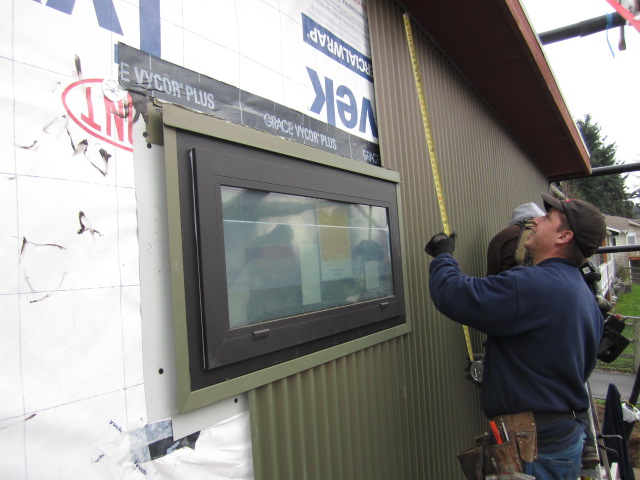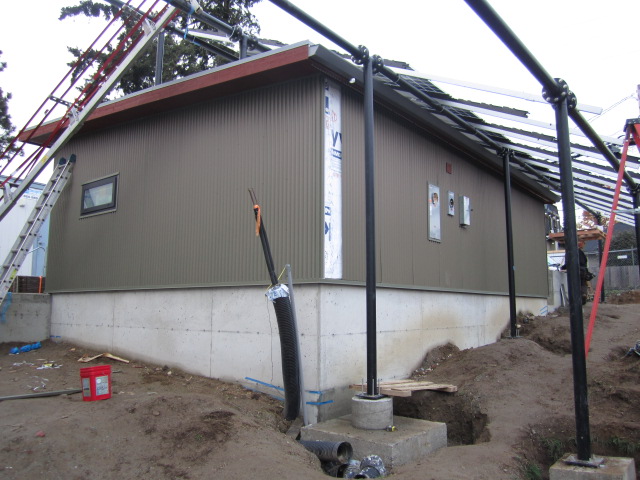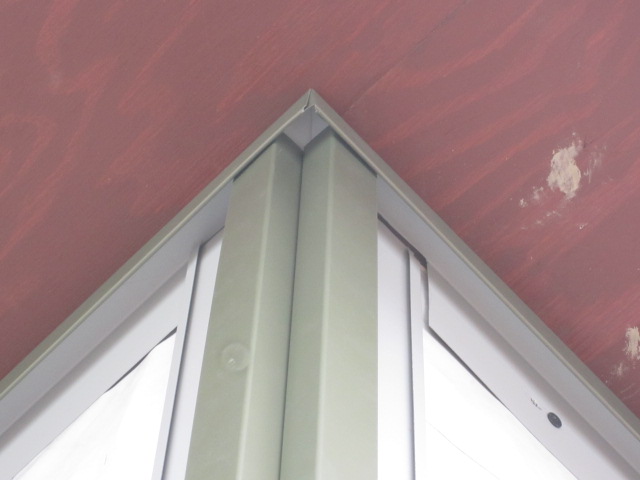With a superinsulated enclosure and triple glazed windows, the heating system does not need to be big. We considered and rejected both ground coupled heat (often called “geothermal”) and radiant floor heat because both would be overkill for the minimal needs of this house.
Ecotope, the mechanical engineer, recommended an inverter driven split system heat pump, made by Mitsubishi. For each kilowatt of electricity input to a heat pump, it will provide about 2.5 kilowatts of heat, because a heat pump moves heat instead of generates heat.
A heat pump operates on the refrigeration cycle, but instead of cooling the inside of a refrigerator, it heats the inside of a room. Heat pumps can provide air conditioning too, in which case they act just like a refrigerator.
There is one outdoor unit, which is the compressor, attached to the garage. Inside we have six zones, each with its own programmable thermostat. Three of the zones have condenser units in utility rooms and their heat is distributed by ducts. The ducts are air sealed at every joint with a gray mastic to eliminate leaks. Aluminum diffusers at the end of the ducts are either set flush in the wood floors or on top of the concrete floors, so they look great and familiar.
The other three zones are heated by wall mounted condensers that emit low velocity heated air. These white units, called “cassettes,” must sit high on a wall, usually over a door. They are not as elegant as floor diffusers, so we used them in less important rooms.








































































